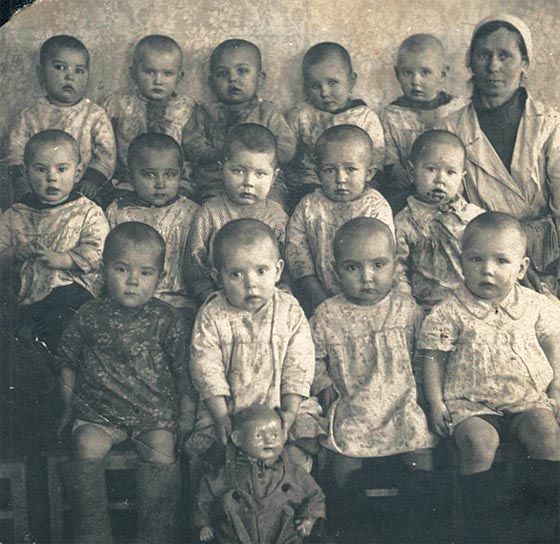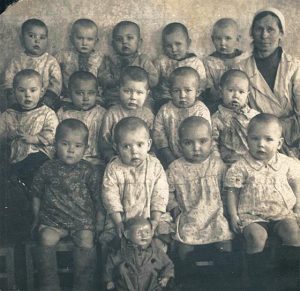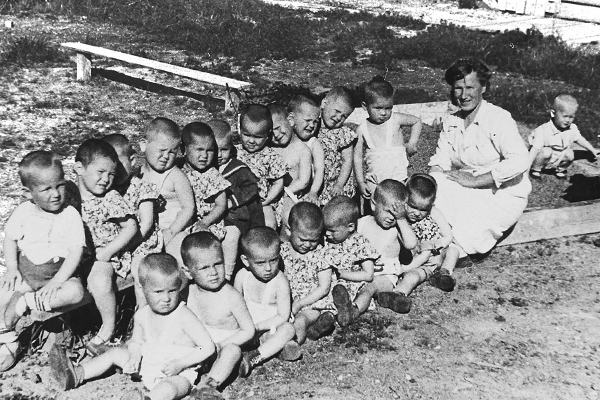The Silent Nursery: Sister Agnes and the Children of the Iron Age

The photograph is a ghost from a past century, a striking black-and-white tableau that speaks of grit, scarcity, and quiet endurance. It shows a large cluster of serious-faced infants and toddlers, packed tightly together on benches and the floor of what appears to be a communal nursery. They are dressed in similar, simple garments—a clear uniform of shared hardship.
This was the St. Jude’s Asylum for Foundlings, circa 1905, a place where the rough edges of the industrial age met the fragile innocence of childhood.

Faces That Knew Scarcity
The most unsettling feature of the picture is the children’s expressions. For their age, they are surprisingly solemn. There is none of the gurgling joy or wild energy one expects from toddlers. Their eyes, wide and fixed on the camera lens, reflect a world that offered little comfort and demanded resilience from birth. They are the “children of the iron age,” survivors of poverty, disease, or abandonment, already schooled in scarcity.

In the back of the room, standing sentinel over the immense crowd of young lives, is Sister Agnes. She is the single adult in the frame, her presence a focal point of unwavering commitment. She wears the plain habit of her order, and her face, though lined by relentless labor, holds a stern but deeply attentive demeanor. There is no room for sentimentality in her gaze; her task is too demanding, too constant.

Sister Agnes didn’t have the luxury of coddling. Her duty was survival. She was the logistics manager, nurse, teacher, and sole provider of comfort for fifty children whose biological families couldn’t keep them. Her life was defined by the rhythm of feeding schedules, laundry, and the constant threat of illness that stalked the crowded wards.

The Measure of Dedication
The photograph captures a fleeting moment of stillness. Perhaps the children have been commanded to be quiet for the camera, or perhaps they simply understand, through their tough reality, the need for order. This rigid environment, though harsh by modern standards, was a lifeline in its time.

Every crease on Sister Agnes’s brow speaks of an immense personal sacrifice. Her devotion was not soft; it was hard, practical, and utterly necessary. She knew every child by name, recognized every subtle sign of fever, and administered every comfort that her strength and limited resources allowed. Her love was less a flowing emotion and more an act of unyielding will.
Looking at the photo, one realizes that the true story lies in the unseen hours: the endless nights spent rocking a sick infant, the sheer volume of clothes washed by hand, the silent prayers whispered over thin cots.

The large gathering of infants, packed together shoulder-to-shoulder, is a chilling reminder of the tough living situations of the era. But the figure of Sister Agnes offers the enduring counter-narrative: that even in the face of overwhelming odds, a single dedicated heart can provide the anchor of safety.
This vintage image is a powerful historical document. It reminds us that our past was built on the quiet, profound dedication of people like Sister Agnes, who exchanged personal freedom for the monumental, unsung task of caring for the most vulnerable. It is a testament to the fact that even the most stoic faces can carry the deepest compassion.